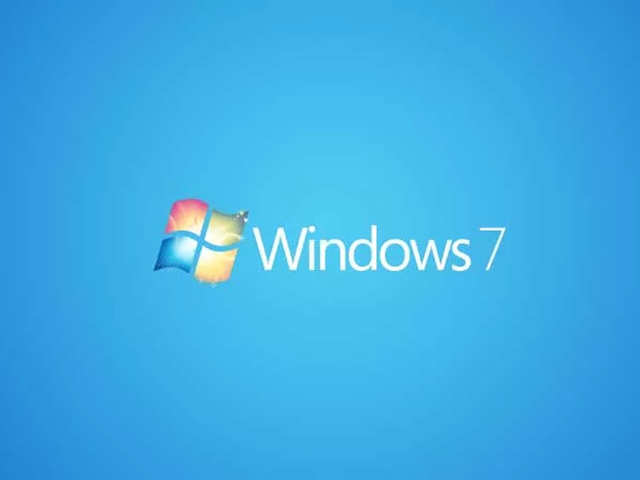
I. Introduction
A. Brief history of Windows 7
Windows 7, released in 2009 by Microsoft, emerged as a successor to the widely criticized Windows Vista. Its development aimed to address the shortcomings of its predecessor and introduce a more user-friendly and efficient operating system.
B. Significance of Windows 7 in the computing world
Windows 7 quickly gained popularity, becoming one of the most widely used operating systems globally. Its intuitive user interface and improved features set a new standard for future Windows iterations.
II. Features and User Interface
A. Aero Glass and enhanced visuals
One of the standout features of Windows 7 was the introduction of Aero Glass, providing a visually appealing interface with transparent windows and refined graphics. This marked a significant departure from the aesthetics of earlier Windows versions.
B. Start menu and taskbar improvements
Windows 7 revamped the Start menu and taskbar, streamlining navigation and making it more user-friendly. The “pinning” feature allowed users to customize their taskbars, enhancing efficiency.
C. User-friendly navigation and organization
The operating system introduced Libraries, making file organization more intuitive. Users could easily access and manage their documents, pictures, and other files, streamlining their computing experience.
III. Performance and Speed
A. Enhanced performance compared to predecessors
Windows 7 brought about notable improvements in performance compared to its predecessors. It featured a more efficient kernel, reducing system resource usage and boosting overall speed.
B. System requirements and compatibility
The operating system maintained a balance, offering improved performance without demanding excessively high system requirements. This compatibility made it accessible to a broad range of users.
IV. Security Features
A. Windows Defender and improved security protocols
Windows 7 marked a shift towards better security with the inclusion of Windows Defender, an antivirus program integrated into the OS. This step aimed to enhance protection against malware and other security threats.
B. Importance of regular updates for security
Microsoft’s commitment to regular updates for Windows 7 underscored the importance of keeping the operating system secure. Users were encouraged to stay current with updates to benefit from the latest security enhancements.
V. Legacy and End of Support
A. Impact of Windows 7 end-of-life
With the official end-of-life for Windows 7 in 2020, users faced the challenge of transitioning to newer operating systems. The cessation of updates left systems vulnerable to emerging security risks.
B. Migration options for users
Users had to explore migration options, with Windows 10 being the most logical successor. The transition prompted reflection on the enduring legacy of Windows 7.
VI. Nostalgia and Community Support
A. Fond memories among users
Many users fondly remember Windows 7 as a reliable and beloved operating system. Its simplicity and effectiveness generated a sense of nostalgia among those who experienced its heyday.
B. Online communities and forums dedicated to Windows 7
Despite the end-of-life status, online communities and forums dedicated to https://www.windowsphonefr.com/ continue to thrive. Users share tips, tricks, and customization options, keeping the spirit of Windows 7 alive.
VII. Alternatives and Upgrades
A. Introduction to Windows 10
Windows 10, Microsoft’s latest operating system, serves as a natural progression for Windows 7 users. Its enhanced features and ongoing support make it a compelling choice for those seeking an upgrade.
B. Consideration of other operating systems
Users exploring alternatives might consider other operating systems like Linux or macOS, depending on their specific needs and preferences.
VIII. Business and Enterprise Use
A. Windows 7 in corporate environments
Many businesses initially hesitated to migrate from Windows 7 due to compatibility concerns and the need for extensive testing. The business sector faced unique challenges in adapting to newer operating systems.
B. Challenges and solutions for businesses post-support
Post-support challenges for businesses included potential security risks and the need for customized solutions. Companies had to devise strategies to secure and update systems beyond the official support period.
IX. Troubleshooting Tips
A. Common issues with Windows 7
While Windows 7 was reliable, users encountered common issues over time. These ranged from software conflicts to hardware-related problems.
B. DIY solutions for users
Empowering users to troubleshoot common problems on their own, this section offers do-it-yourself solutions to maintain the performance and functionality of Windows 7 systems.
X. Future Implications
A. Continued use of Windows 7 in specific scenarios
Certain scenarios, such as running legacy software, may warrant the continued use of Windows 7. However, users must weigh the benefits against the security risks associated with an unsupported system.
B. Potential risks for unsupported systems
Operating Windows 7 beyond its end-of-life poses inherent risks, including exposure to security vulnerabilities and the lack of crucial updates. Users must carefully consider these risks when deciding on the operating system’s future use.
XI. Expert Opinions
A. Insights from tech experts on Windows 7
Tech experts provide valuable insights into the impact of Windows 7 on the computing landscape and offer guidance on navigating the transition to newer operating systems.
B. Recommendations for users
Expert recommendations guide users in making informed decisions regarding their operating system choices, emphasizing the importance of security and ongoing support.
XII. Conclusion
A. Summarize key points
Windows 7, with its revolutionary features, user-friendly interface, and enduring legacy, remains a pivotal chapter in the evolution of operating systems. As users navigate the post-support era, the decision to upgrade requires thoughtful consideration of individual needs and preferences.
B. Encourage users to make informed decisions
The conclusion encourages users to evaluate their computing needs and choose an operating system that aligns with their goals. Whether opting for Windows 10 or exploring alternative systems, making informed decisions ensures a seamless and secure computing experience.


